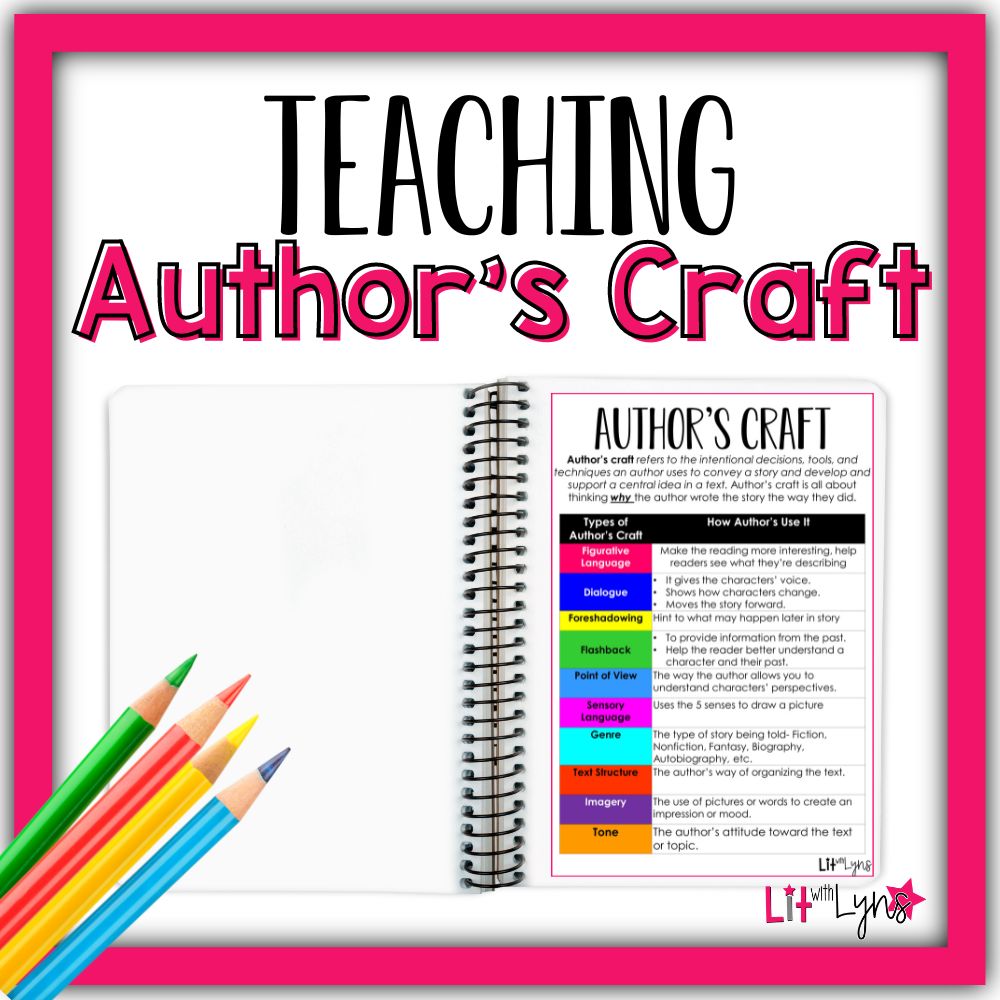
Author’s craft can be a tough standard to teach. After seeing my students struggle with this, I decided to figure out a way to break this down in a way that would make more sense. Here are 3 ways to help your students master this skill.
Author’s Craft Anchor Chart
I made the anchor chart seen in the image above to post on the wall in the classroom. You can also download this for FREE here! We work through the list in the book(s) or stories we’re reading. We definitely do not do them all in 1 day or even 1 week. This would be extremely overwhelming for everyone. As we’re reading our novel, I find a couple of examples of the author’s craft found in that day’s reading. Once we come across it, I have students document this in their reading notebooks. I provide each student with a smaller version of the anchor chart that they can glue into their notebook or put in their binder. Then they can add to it as they find examples of author’s craft while they’re reading.

Scavenger Hunt
What do kids like more than a little competition!! Pick a passage or short story, and have students identify any examples of author’s craft they can find in that particular text. You could differentiate by finding texts on Commonlit.org where you can choose which Lexile level works best for students, and group them accordingly. If you aren’t familiar with Commonlit, learn all about it here.
Use Children’s Books
When having students read books that are easy to understand, it also makes it easier for them to identify any repetition, foreshadowing, flashbacks, figurative language, etc. This would be a great way to work on developing students’ understanding of author’s craft, especially when they’re just beginning to dig into it. Some of the books that have worked well for me are:
- After the Fall: How Humpty Dumpty Got Back Up Again– by Dan Santat
- Truman– by Jean Reidy
- Lunch Every Day- by Kathryn Otoshi
- There is also a unit on Commonlit called “Characters Who Change and Grow.” It includes 4 stories that demonstrates how characters are different at the end from how they are at the beginning. Since recognizing how character’s change is also part of author’s craft, this is another way to familiarize students with what they need to recognize as they’re reading. This unit also has students complete reading responses to address what they noticed about the author’s writing. What changed about the character? Why did they change? This is another great way to hone in on these important, yet challenging, skills.
How do you teach author’s craft? I’d love to hear in the comments!

